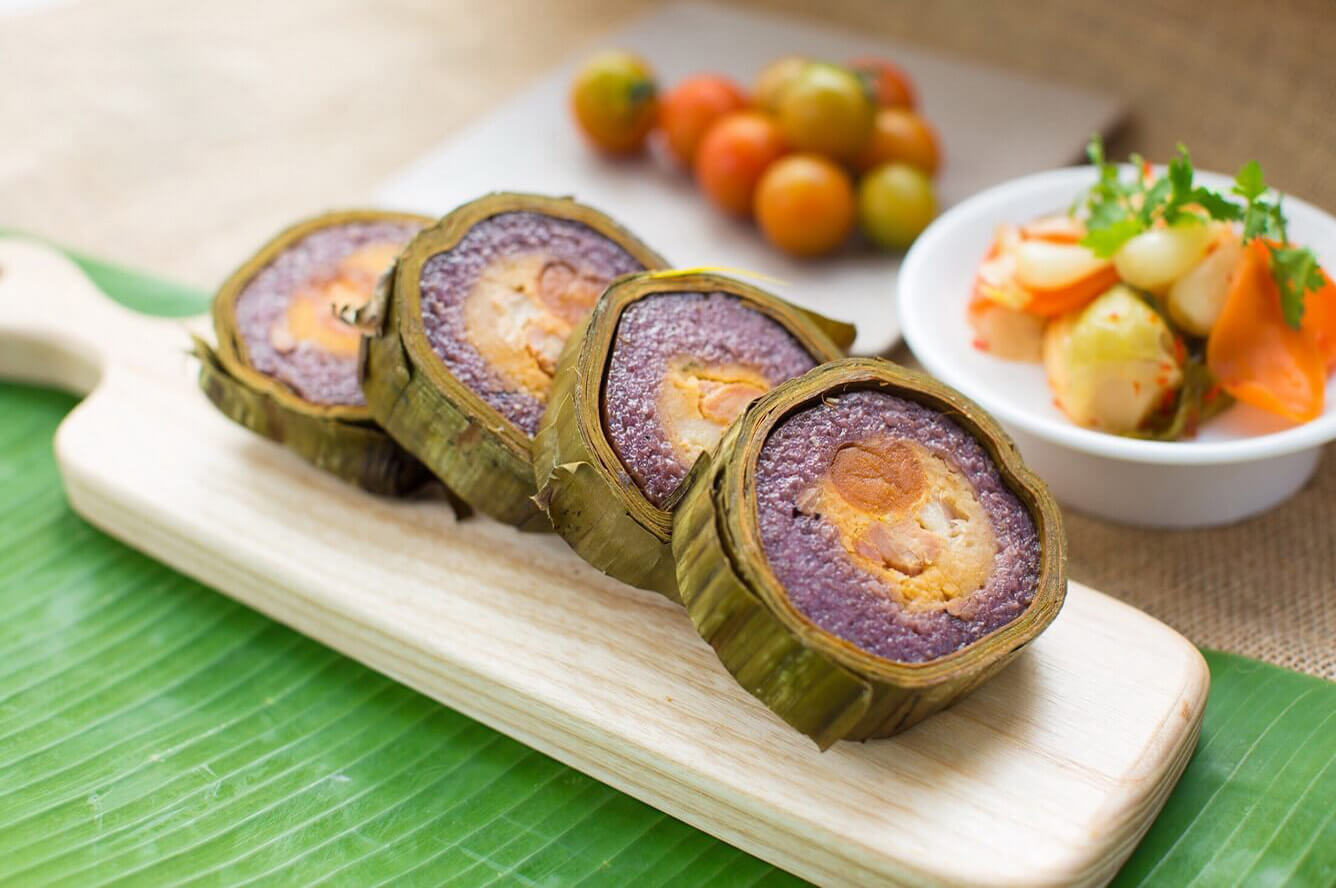Being one of the most popular treats during the Tet holiday in the southern provinces, banh tet symbolizes the cultural legacy of this region. Read on to learn about its story, ingredients, and making process.
During your Vietnam travel journey, besides admiring breathtaking landscapes, savoring delectable Vietnam cakes. should be one of the top activities on your bucket list. In this culinary adventure, banh tet shines brightly as a must-try treat, as it holds special meanings in Vietnamese culture. Savoring this delicious cake offers a flavorful opportunity to immerse yourself in Vietnam’s culinary heritage.

1. The origin of banh tet (tet cake) and its name
Similar to other Vietnamese rice cakes, banh tet history is worth learning about. Some experts link its roots to the absorption of Cham cultural beliefs, including the worship of rice deities, during the Vietnamese expansion southward. Meanwhile, a popular anecdote traces its origins to the time when King Quang Trung was leading the Vietnamese army in the battle against the Qing Dynasty. On the Tet holiday, a soldier presented the king with a cylindrical-shaped cake wrapped in banana leaves. Upon tasting the cake and knowing its familial meaning to the soldier, the king was so moved that he declared it the Tet cake.

The name “bánh tét” has a few different stories behind it. At first, it was just called “bánh Tết,” named after the Vietnamese “Tết” holiday. But because of regional differences, it got translated into “bánh tét.” Another explanation for the name comes from how people cut the cake. When eating this cake, they use a string to circle the top and then cut it into slices. This cutting action, making circles, led locals to call it “banh tet,” kind of like the way the cake is sliced.
2. The meaning of banh tet in Vietnamese culture
According to ancient beliefs, foods consumed during the Tet holiday signify remembrance of the past, hopes for prosperity, and the importance of family unity. Banh tet in the South, similar to Chung cake in the North, is an offering to express gratitude to the deities and the earth for a bountiful harvest.
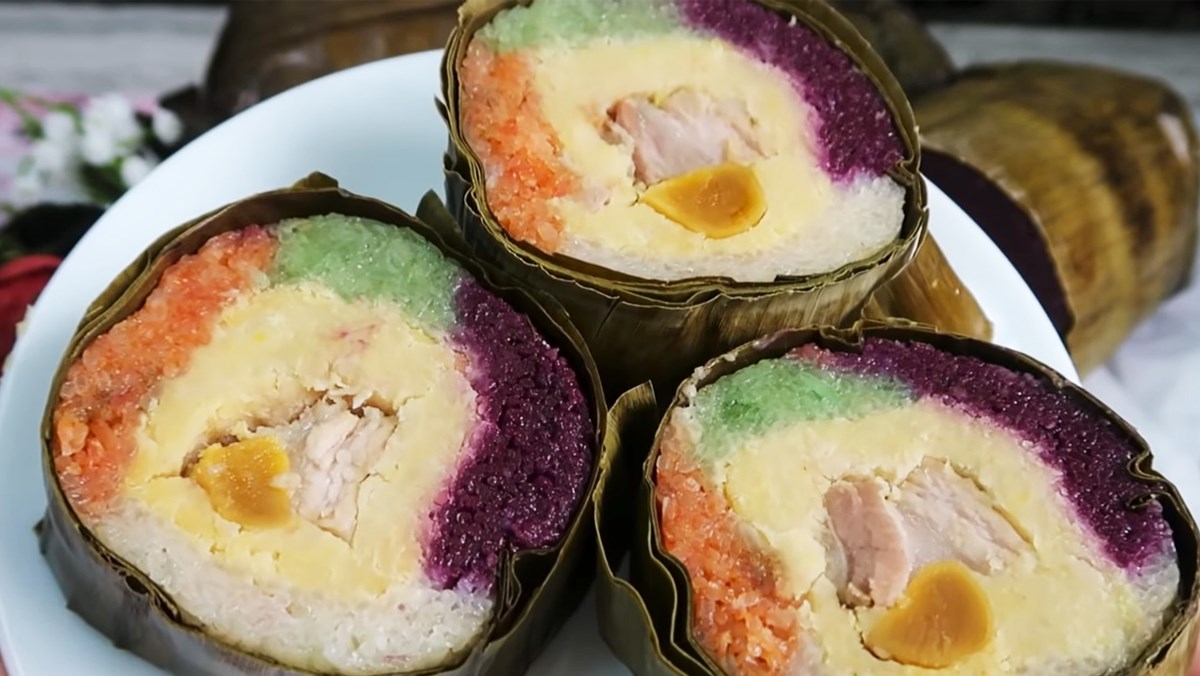
The traditional banh tet is wrapped in many layers of leaves, symbolizing a mother embracing her child, expressing the Vietnamese people’s desire for family togetherness during Tet. Moreover, the green exterior and yellow mung bean filling of the “bánh tét” evoke the greenery of the countryside, representing the dream of a peaceful and prosperous spring for every household, in line with the aspiration for settled and happy lives.
3. How do Vietnamese people make banh tet?
3.1. Preparation for banh tet

Preparing Banh Tet involves a few steps and specific ingredients:
- Ingredients
- 400g yellow flower sticky rice
- 200g green beans
- 1 bunch of bamboo slices
- 100g pork belly
- Banana leaves
- Spices: salt, seasoning powder, ground pepper
- Preparing sticky rice
- Wash the sticky rice and soak it in water for 8 hours until soft.
- Drain the rice, sprinkle with 4 grams of salt, and mix for flavor absorption.
- Preparing green beans
- Clean and soak the green beans for 4 hours to soften.
- Drain and add 4 grams of salt, mix well.
- Preparing bamboo strips and banana leaves
- Soak bamboo slices for 8 hours, then tear them into thin strips (0.5 centimeters wide).
- Wash and divide banana leaves into 60-centimeter pieces, rolling them gently.
- Boil water with salt and blanch banana leaves to soften.
- Preparing pork belly
- Wash and cut pork belly into long, 2 centimeter-wide pieces.
- Marinate the pork with 4 grams of seasoning powder and 1 gram of pepper for 30 minutes.
3.2. Wrapping and cooking banh tet

- Wrapping process
- Spread banana leaves on a flat surface and lay two pieces of banana leaves side by side with an additional piece in the middle.
- Place sticky rice in the center of a banana leaf before adding 100 grams of green beans to the rice.
- Put a piece of pork belly on the beans, then add another layer of green beans and sticky rice.
- Wrap the middle banana leaf layer to secure the rice, then tightly roll using the outer layers. Firmly tie the cake with string, both vertically and horizontally.
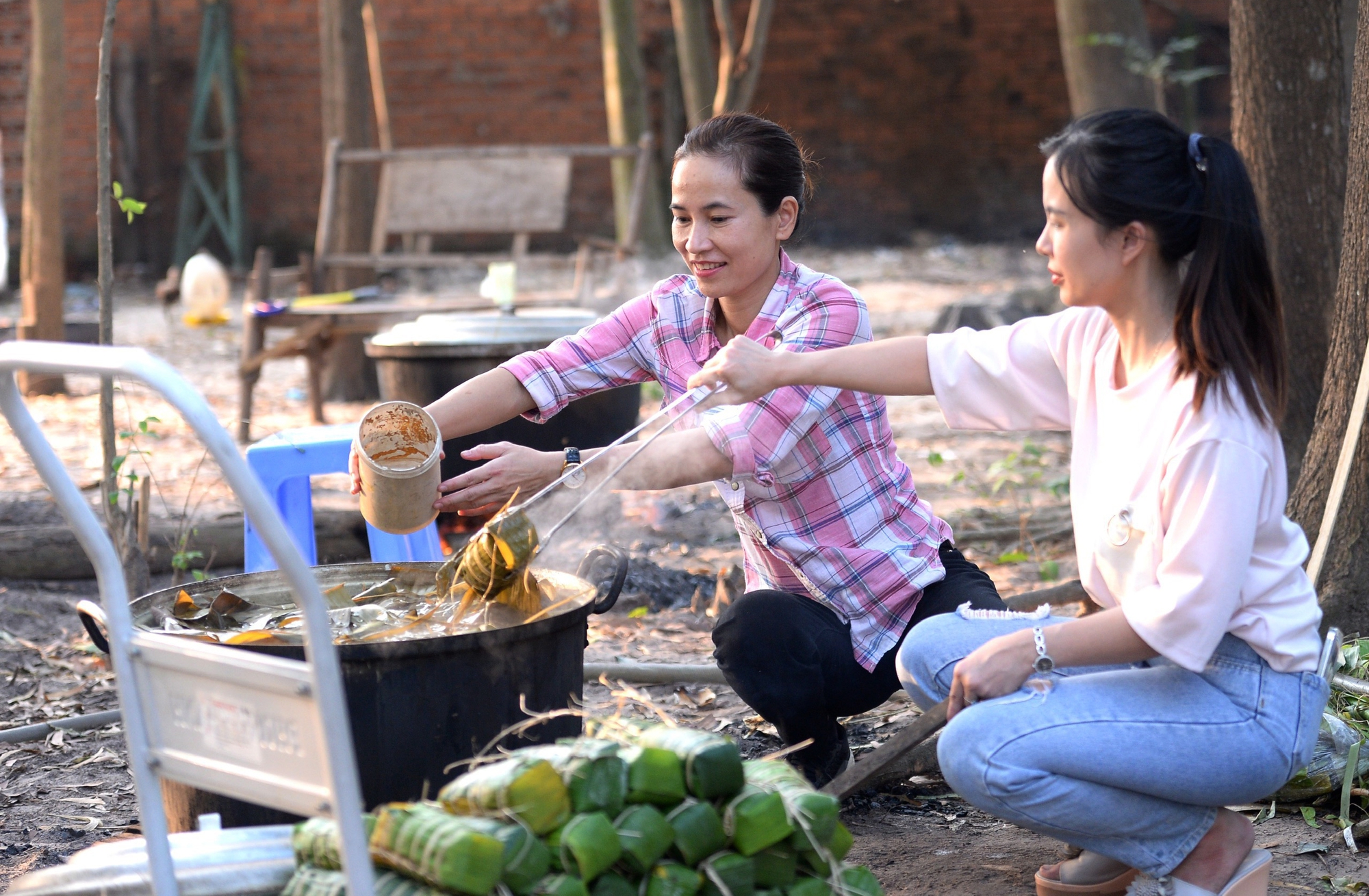
- Cooking process
- Line a large pot with banana leaves and place the banh tet lengthwise.
- Pour water to cover the cake and boil continuously for 8 hours on medium heat.
- To ensure even cooking, lower the heat once the water boils and maintain medium heat throughout.
- After boiling, remove the cake, drain it, and let it cool.
4. What are the most delicious types of banh tet in Vietnam?
4.1. Banh tet Tra Cuon
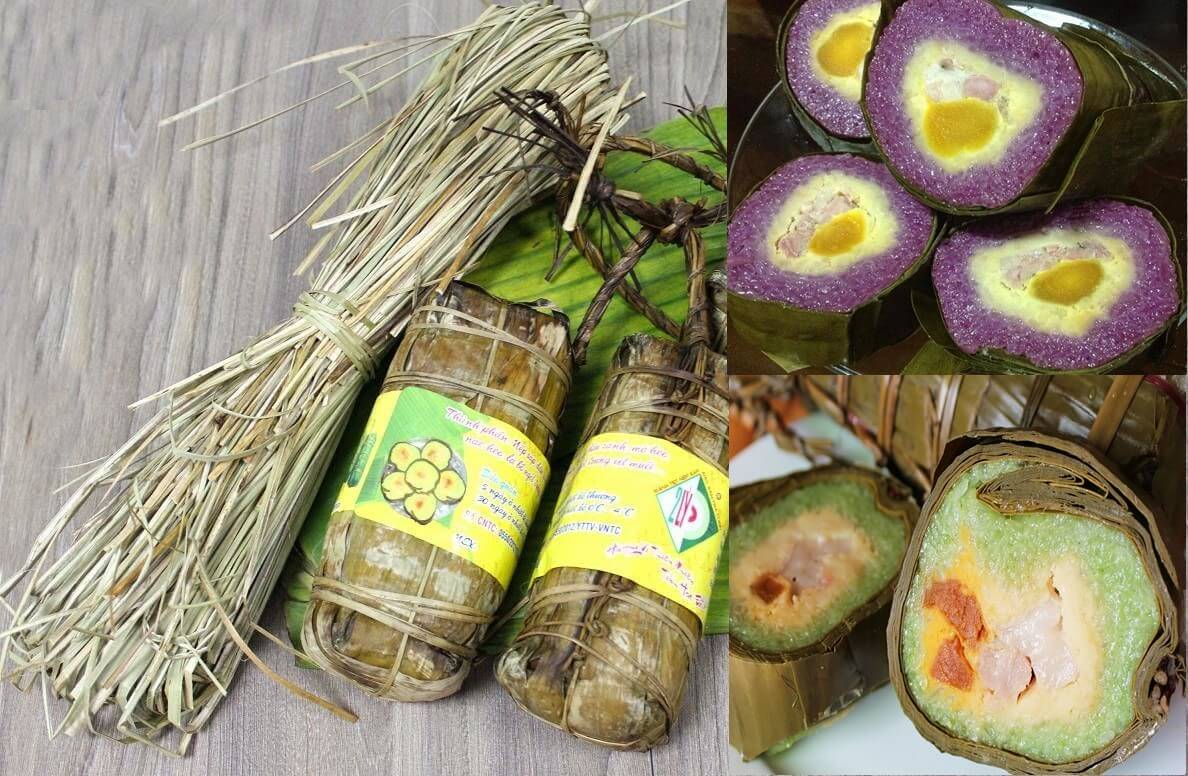
Banh tet Tra Cuon hails from Cau Ngang in Tra Vinh and is known for its top-notch quality. It is big and hefty, with a crust made of high-grade glutinous rice and infused with a dark green color from the leaves. Inside banh tet Tra Cuon, it is not just fatty meat; there are also salted eggs and dried shrimp for flavor. Its beautiful colors make it a popular choice for Tet worship.
4.2. Banh tet with bananas
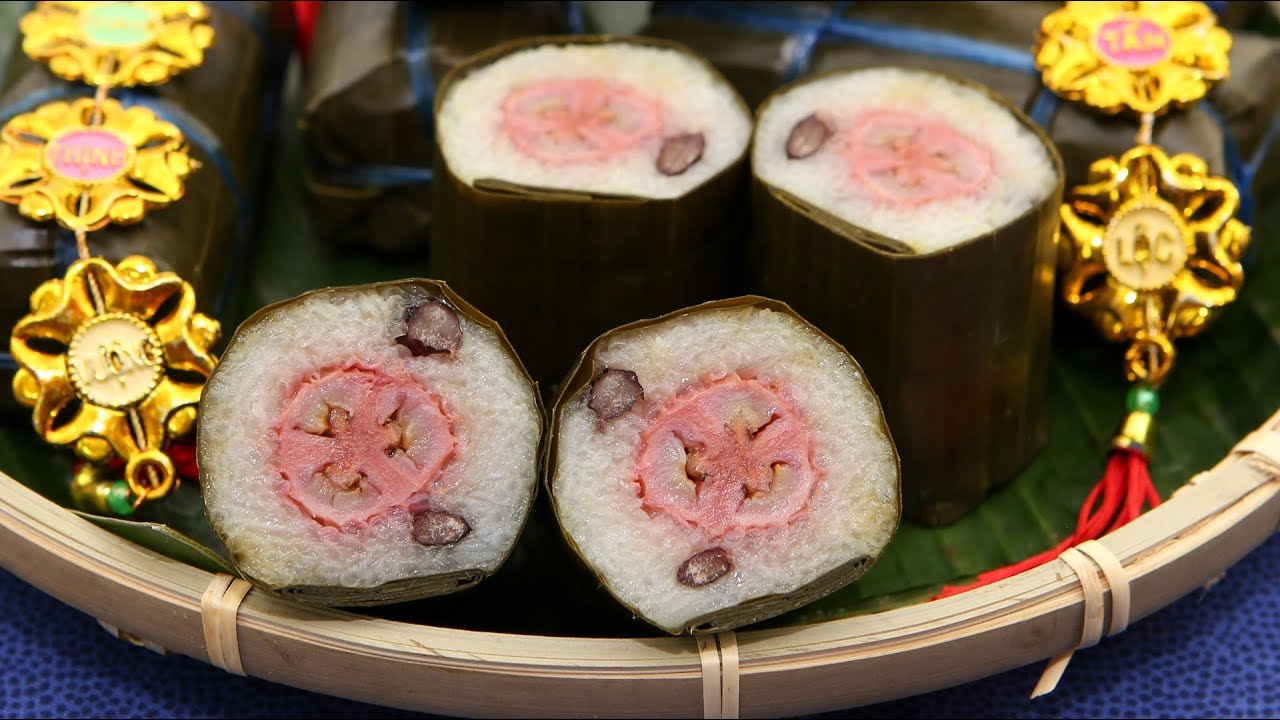
Banh tet with bananas is not tied to any specific region. Children often enjoy this banh tet variation due to its sweet and easy-to-eat banana filling. The crust, wrapped in banana leaves, smells deliciously of coconut milk and includes black beans. It is sweetened with sugared Siamese bananas, creating a rich and sweet taste that is hard to describe but feels just like home.
4.3. Banh tet with pandan leaf flavor
Banh tet with pandan leaves is a classic cake loved by everyone in Vietnam. You can easily find this type of cake all over the country, no matter where you live. The crust is made from sticky rice soaked with the juice of pandan leaves, giving the cake a bright green color. Inside, you will find a mix of green beans, marinated pork belly, and a hint of spiciness from black pepper.
4.4. Banh tet with magenta plant flavor
Banh tet with magenta plant flavor has a stunning and unique look. Its crust has a vibrant purple color from the magenta leaves. The cake is filled with fatty meat, bean paste, a couple of golden salted eggs, and slices of quality pork belly. When you cut it, the cake looks like a pretty purple flower petal with yellow parts.
5. How to eat Vietnamese banh tet in a proper way?

During the spring gatherings, enjoying Banh Tet with family is a tradition, but eating too much can get boring. Here is how to keep it tasty:
- Banh tet with pickles: You can savor banh tet with sweet and pickled veggies like green papaya or carrots. They add a tangy, crunchy contrast to the texture of banh tet, creating a delightful meal.
- Fried banh tet: By frying slices of banh tet, the crust will have a satisfying crunch while the inner rice turns more tender and the filling becomes moist thanks to the heat. You can enjoy hot fried banh tet with braised pork or dip it in sugar or milk for a sweet twist.
- Banh tet with braised meat: It is common to eat banh tet with braised meat for a simple, tasty meal.
6. Where to buy banh tet on your trip to Vietnam?
While visiting Vietnam, you can find Banh Tet everywhere, even among all the modern foods. It is not just a Tet treat; you can grab it on regular days too. In big cities and tourist spots, food stalls and restaurants sell Banh Tet. A full one might cost around 40,000 to 100,000 VND.

